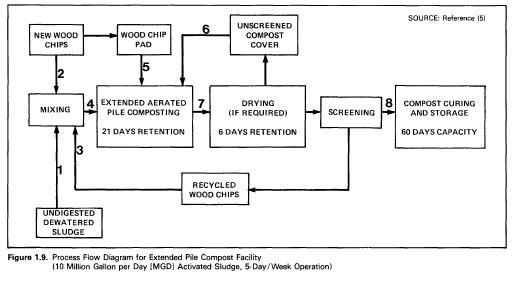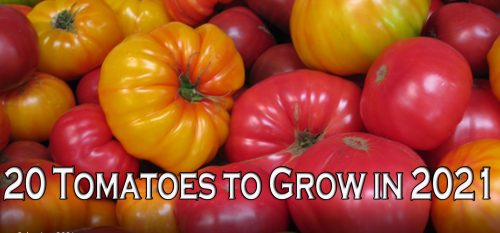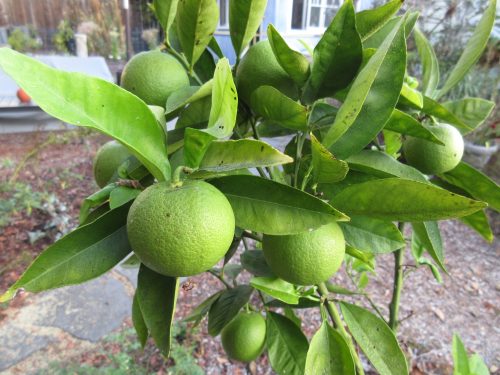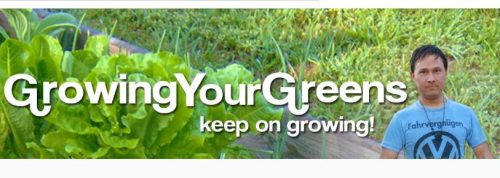Warning – this gets technical, but if you value your health you’ll read the details.
Perhaps you’ve seen it in the news lately, or perhaps you’ve been seeing it in the news for a few decades. I’m talking about sewage sludge. Time and time again, we are challenged with the task of finding out what’s really in the stuff we eat, or in this case, what’s in the stuff we use to grow the stuff we eat. I’ve always been a big proponent of knowing where my garden supplies come from, and I’ve done a lot of research over the years. Every once in a while, however, something gets by me, and then, much like after seeing a Robert Altman film, I feel used and dirty.
I’ve only just begun digging deeper on the subject of sewage sludge in our commercially available compost, so this is just a preliminary report. Through my efforts to find out more, I am finding out how much more I still need to learn before I can talk about it. That said, here is the path of knowledge so far:

from the EPA’s “Composting of Municipal Wastewater Sludges” publication (1985)
First – the latest news about the City of San Francisco giving out free compost to residents that is made, as it turns out, from sewage sludge. What’s the big deal about sewage sludge, you ask? Well – apparently it’s toxic. Sewage sludge consists of the biosolids that are left behind after they purify the water to return to the bay. What’s in those biosolids? Here’s a quick list as mentioned in this article by Jill Richardson:
“A recent EPA study of 84 sludge samples from around the country found 27
metals, three pharmaceuticals (Ciprofloxacin, Diphenhydramine and
Triclocarban), four anions (nitrates/nitrites, fluoride and
water-extractable phosphorus), three steroids (Campesterol, Cholestanol
and Coprostanol), and a number of toxic flame-retardants in nearly every
single sample tested.”
Next – I found a 2007 article by a trusted reporter for the San Fransisco Gate – Deborah K. Rich. I quote her article “A Case Against Synthetic Fertilizers” time after time, and once again, she provides a bounty of detailed information on the process of creating commercial compost:
It’s a good read – worth the 5 pages. One particular detail that Deborah illustrates is that while it’s true that 85-90% of trace heavy metals, antibiotics and hormones are reduced by composting a product for 139 days, most commercial compost producers only compost their product for 30-60 days – and some as little as 15! Eek!
What’s more:
The Organic Consumer’s Association has put out a call to action against the city of San Francisco. You can find out more about that here.
**Now, just a quick side note here. San Francisco has a dual sewage system. All the black-water waste from toilets AND the waste from storm drains goes to the same place. In Los Angeles, we have separate storm drains from black-water waste collection. It’s great that SF processes all of their waste water, whereas LA’s storm water system drains straight to the ocean with no processing beforehand.
So here’s where things get nasty. Most organic compost products available are made with some kind of biosolid – and that means sewage sludge. The word “Organic” is being used here in the literal sense – the waste is organic, meaning it is alive and “of the earth” or “carbon based”. It isn’t being used in the regulatory, USDA Organic, or Certified Organic sense of the word. The only way to know if you have a truly Organic product is to look for the OMRI (the Organic Materials Review Institute) stamp of approval on it. Anything else is up to the EPA… and how much do you trust the EPA now?
What about Organic Fertilizers?
By the way, this goes for organic fertilizers too. As you may know, organic fertilizers are made from by-products of the meat processing industry. Bone meal, feather meal, and blood meal all come from processing plants for meat and poultry. Now, I always tell my students that there is no way to know or guarantee whether the by-products that go into these organic fertilizers are from organic meat and poultry farms or not. Most likely not. So that means that there is a likelihood that some residual hormones, antibiotics and what not will make its way into the product.
So you might be thinking what I thought – buy vegan fertilizer. Well – as it turns out, vegan fertilizer (which is mostly seaweed based) can at times have higher levels of heavy metals than the by-product based fertilizers. ARG!
Here’s a nifty site I found that talks about the nutrient and contaminant levels of most fertilizers:
Look your fertilizer up and see what’s in it (oh – and by the way, fertilizer companies aren’t required to test for heavy metals because their products aren’t made from sewage sludge). Here’s a handy baseline for you:
Whew! So that’s where I am at this point. There is clearly more research to do, but I couldn’t hold this in any longer. I hope you will use this to make informed decisions about your gardening products. My bottom line to you this week:
All the more reason to make your own compost and reduce your reliance upon outside sources.




It seems rather ironic how a word play on the singular word ‘organic’ can bring about such a different aspect towards the reality of fertilizers. We should be very mindful of the compost we select, this requires intensive research if one is truly concerned with this environmental issue. If the contents are made transparent to the user, safety of usage should be more or less guaranteed.
I have an update. I got a response from Kellogg about their Master Nursery and Gardner and Bloome products. Here’s how they responded to my two questions:
1) Does Kellogg still use sewage sludge to produce Master Nursery Products including Bumper Crop and Gardener’s Gold?
Kellogg has never used sewage sludge to produce any of the Master Nursery or Gardner and Bloome Products. We have always used “sewage sludge” (in our case Class A Bio-solids) as part of the blend in Gromulch, Topper, Amend and Nitrohumus. The rest of the Kellogg line is also Biosolid-free.
2) Even though the Master Nursery line of products are labels “organic”, why is there no OMRI approval rating on the product? I would trust the product more if it were labeled with the OMRI approval.
The Master Nursery Products are part of a national program through the Master Nursery Co-op. Each soil product is produced by a number of vendors regionally around the country, so there is no uniform product to be approved. For the past 50 years “organic” has meant that the product was made from carbon-based (formerly living) ingredients. Only recently – the past 10 to 15 years – the “organic” label has been co-opted by many different organizations to mean different things. Happily, OMRI has risen to the challenge and has become the accept arbiter of what is and isn’t “organic”. Our Gardner and Bloome and Kellogg lines of Natural and Organic fertilizers are now OMRI listed, by the way. We are investigating the value of OMRI listing of several of our soils, and may submit them in the future. The biggest issue is variability of ingredients – we can control and limit the sources of ingredients in fertilizers due to the lower volumes needed, but need a large number of wood vendors to meet the demand of our soil volume. Each vendor and ingredient must be OMRI-listed to be used in that product, and the production must be isolated from other non-OMRI ingredients to prevent “contamination” of the product. Also, we’ve that that most organic gardeners prefer to make their own compost vs. “store bought”, so the value of OMRI listing is diluted. And, though I am an OMRI fan, they only certify that the products are safe (and proper) to use in organic gardening. They do not guarantee efficacy or product quality. There are a number of peat moss-based and coir-based products that are “safe” to use, but have little value to the gardener.
(Special thanks to Scot Hunter at Kellogg for answering these questions)
Wow, in depth and eye opening. Almost too much to comprehend, but I’m trying to get it a little at a time. Thanks for a good start.
Thanks Christy. I’ve always wondered about this very topic. I was under the misapprehension that if the label didn’t say something like “biosolids” on it then it was free of sewage sludge. Oh wellllll.